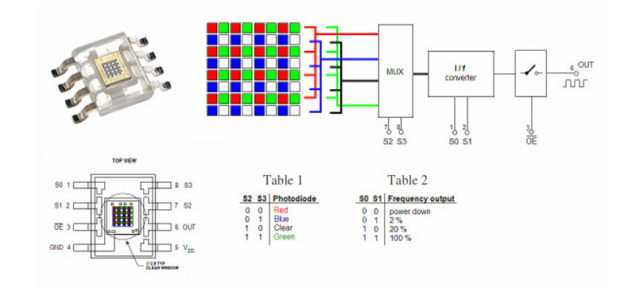Color Sensor with Arduino and Fractions of Red - Green – Blue in Color Detector
Todica in his comprehensive works explore the further spectrum of Color Sensor with Arduino. Precisely, the aforementioned color sensor comprises proportions of each color. In this perspectives, each color constitutes combination of different proportions of fundamental colors Red, Green, and Blue. When a colored object is lighted with white light, it reflects only fractions of the fundamental colors of the incident light. We will call these fractions R, G and B.

Furthermore, Todica explores the mechanism of color detection. Precisely, Detecting the color of a specified object means to establish the values of these fractions. For this objective, the object is lighted with white light and then the measurement is conducted separately the intensity of the red, blue and green radiations reflected by the object. One of the cheapest color sensors in current specification is the TC 230.
This TC 230 contains four types of photodiodes sensitive to red, blue, green and white light and four white led for lighting the object. The activation comprises a desired type of photodiode applying TTL signals to the entries S2 and S3 as shown in Table 1. So we can record separately the component R, G, B of the light reflected by the object. On the output of TCS 230 an analog signal is not obtained, instead, a square wave signal with the frequency determined by the intensity of the light received by the sensor.
Source: M. Todica, (2016) Color Sensor with Arduino. Research. DOI: 10.13140/RG.2.1.4066.6645

Comments :